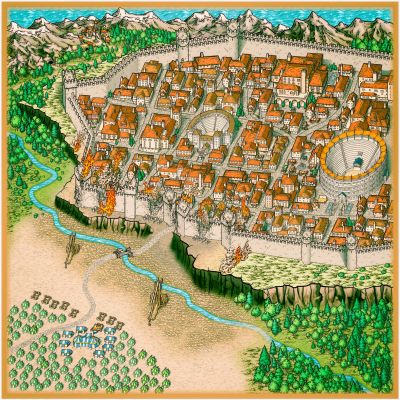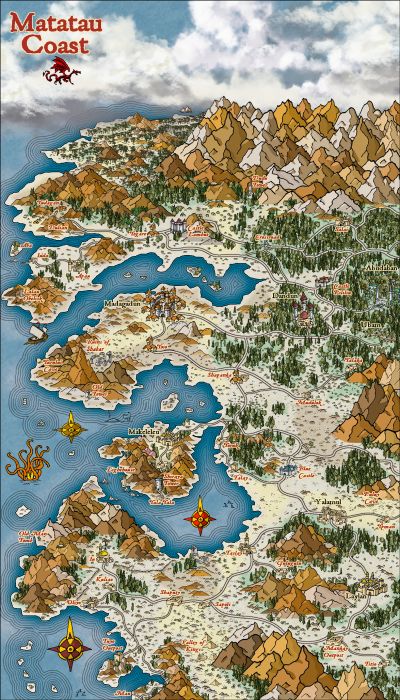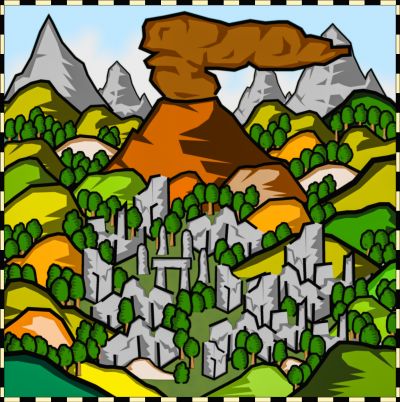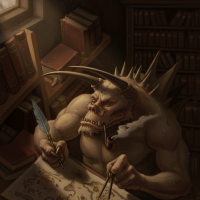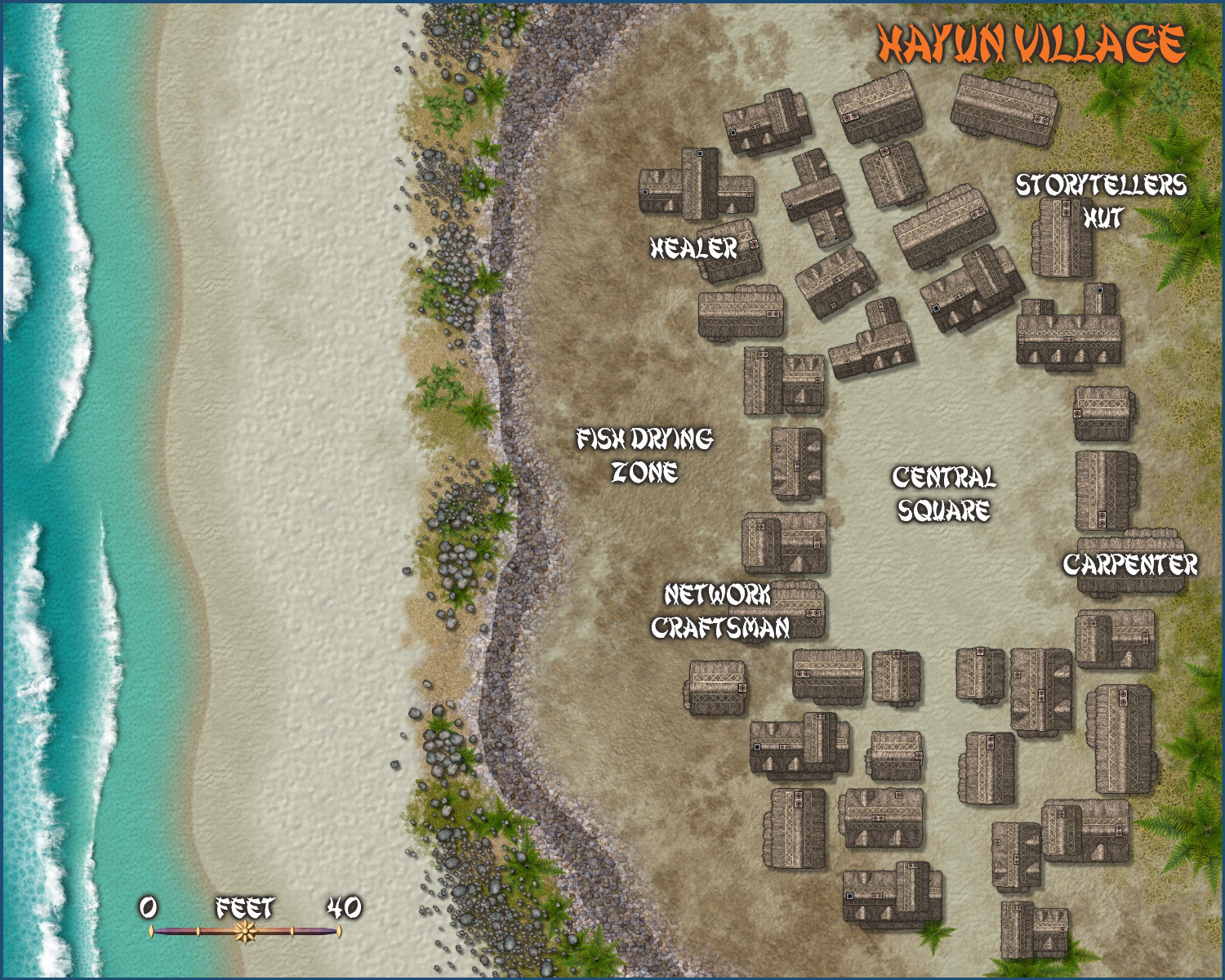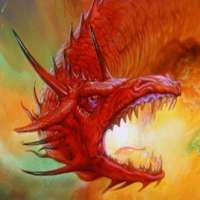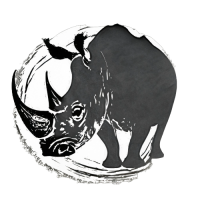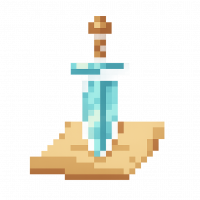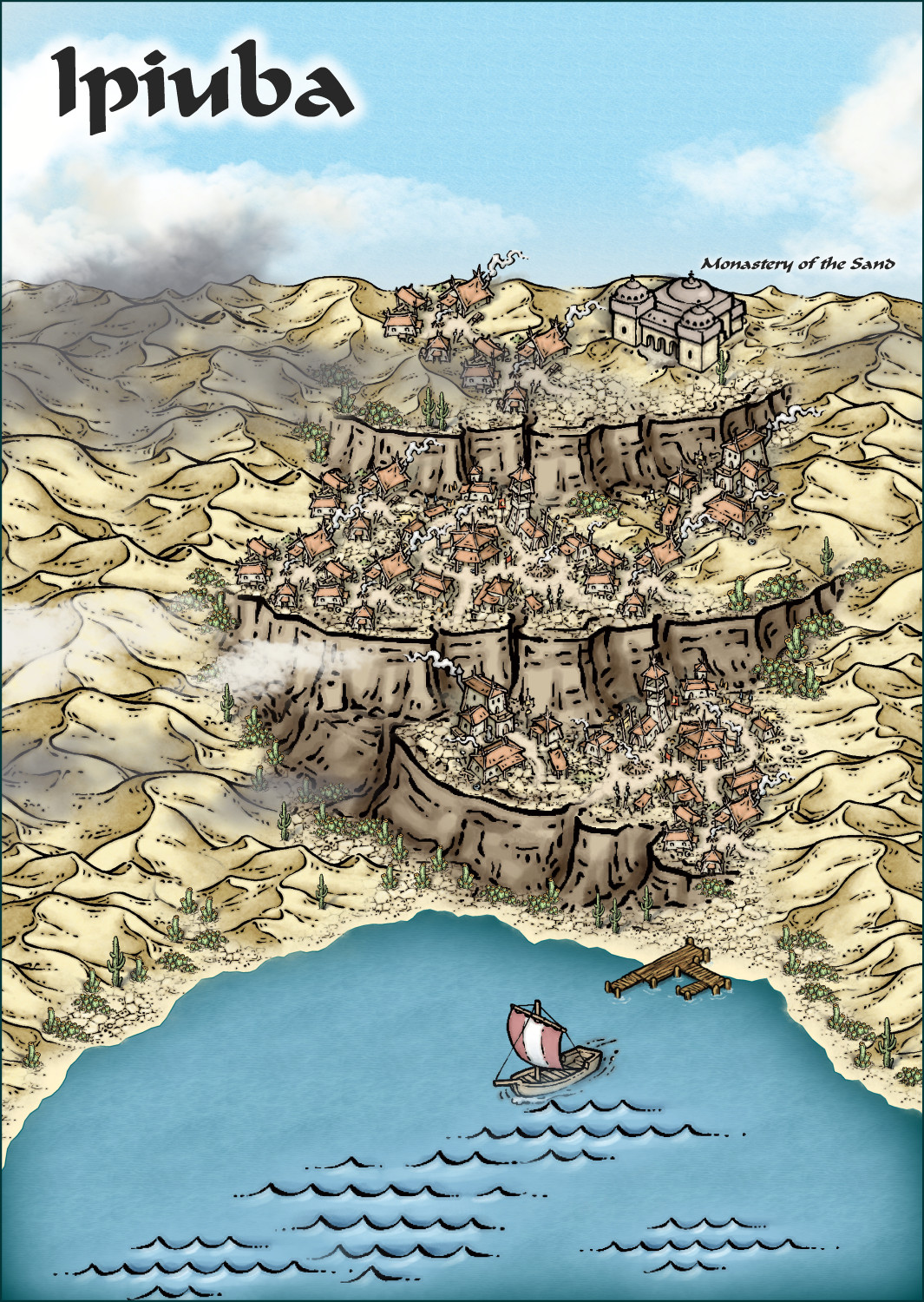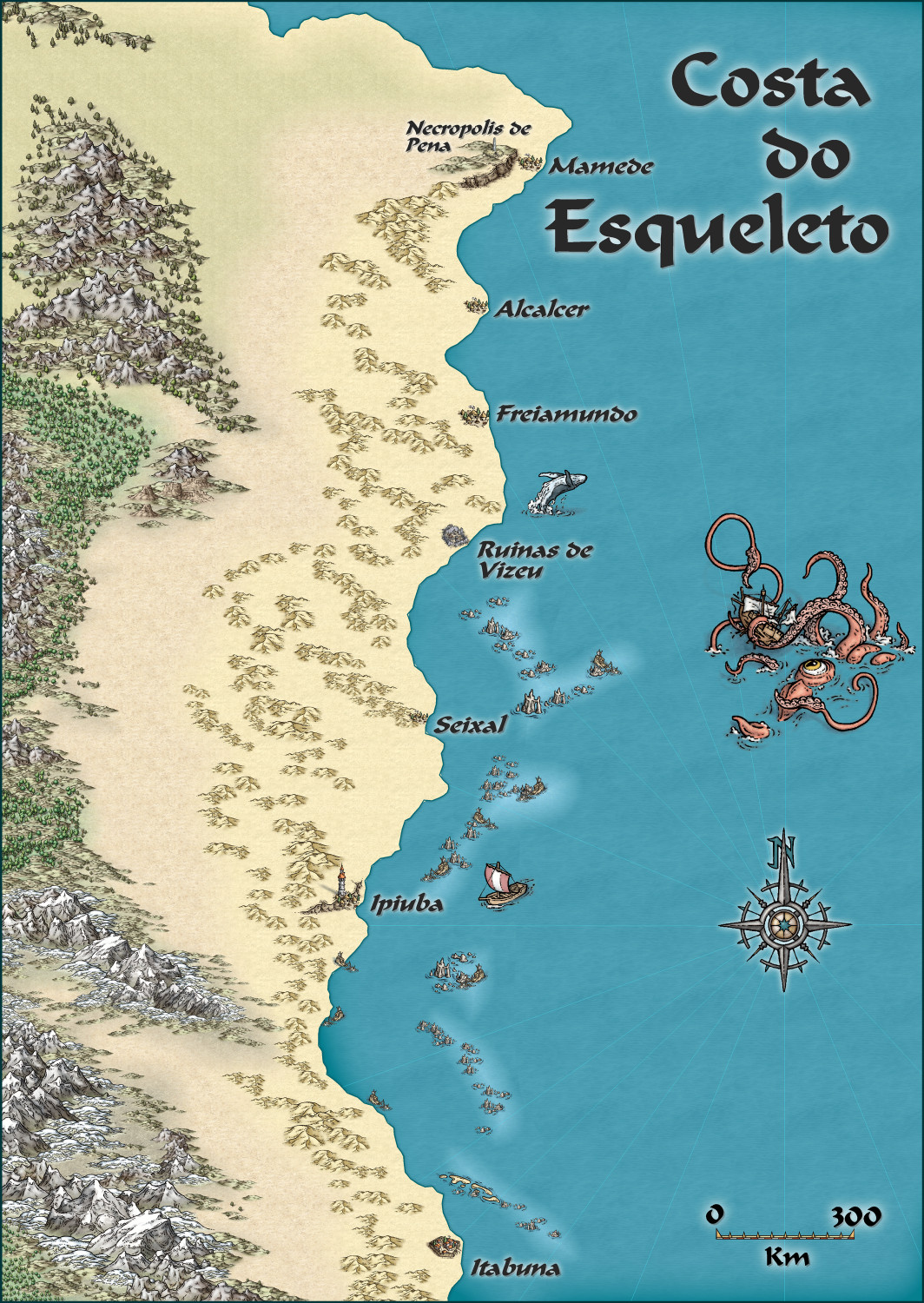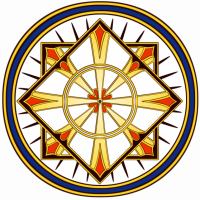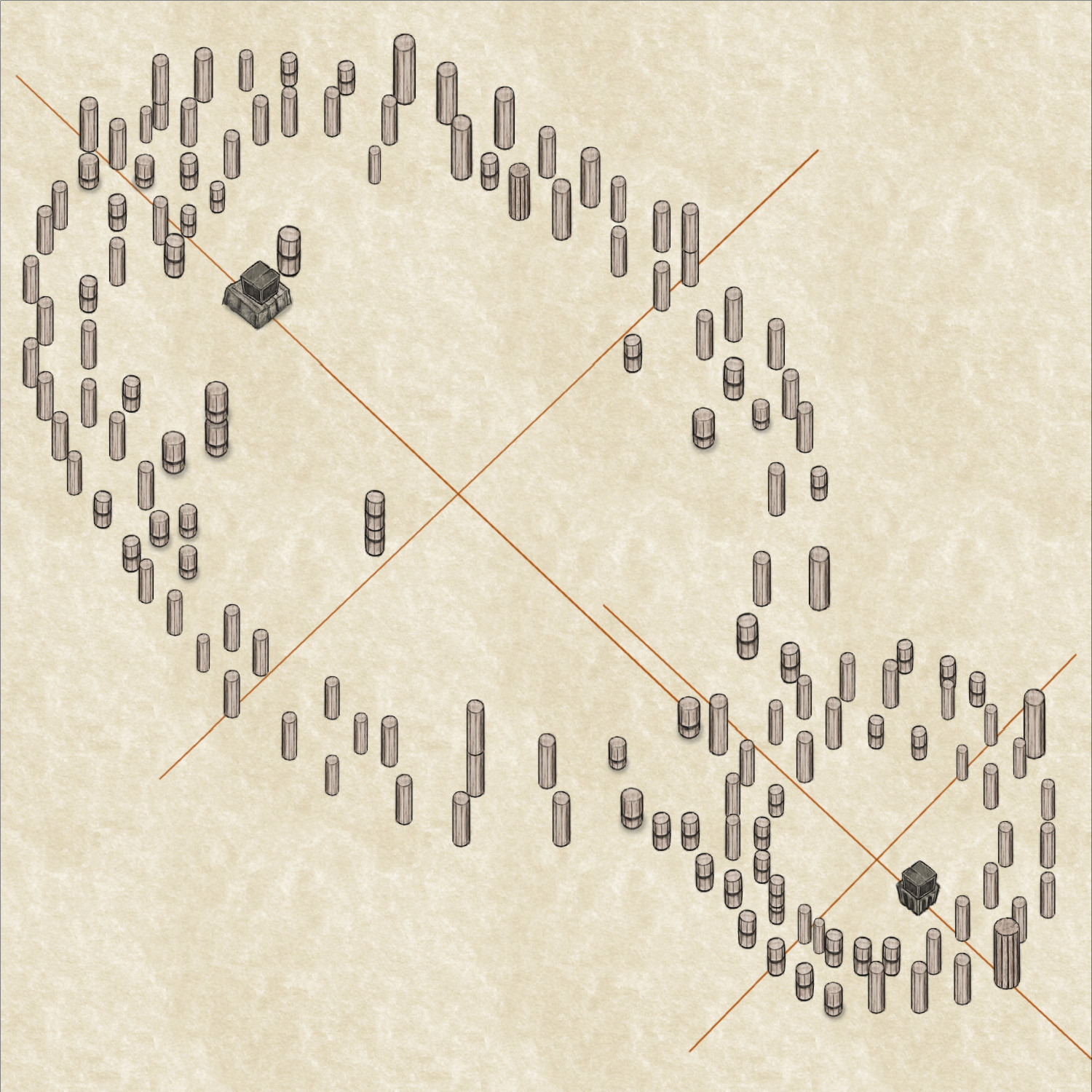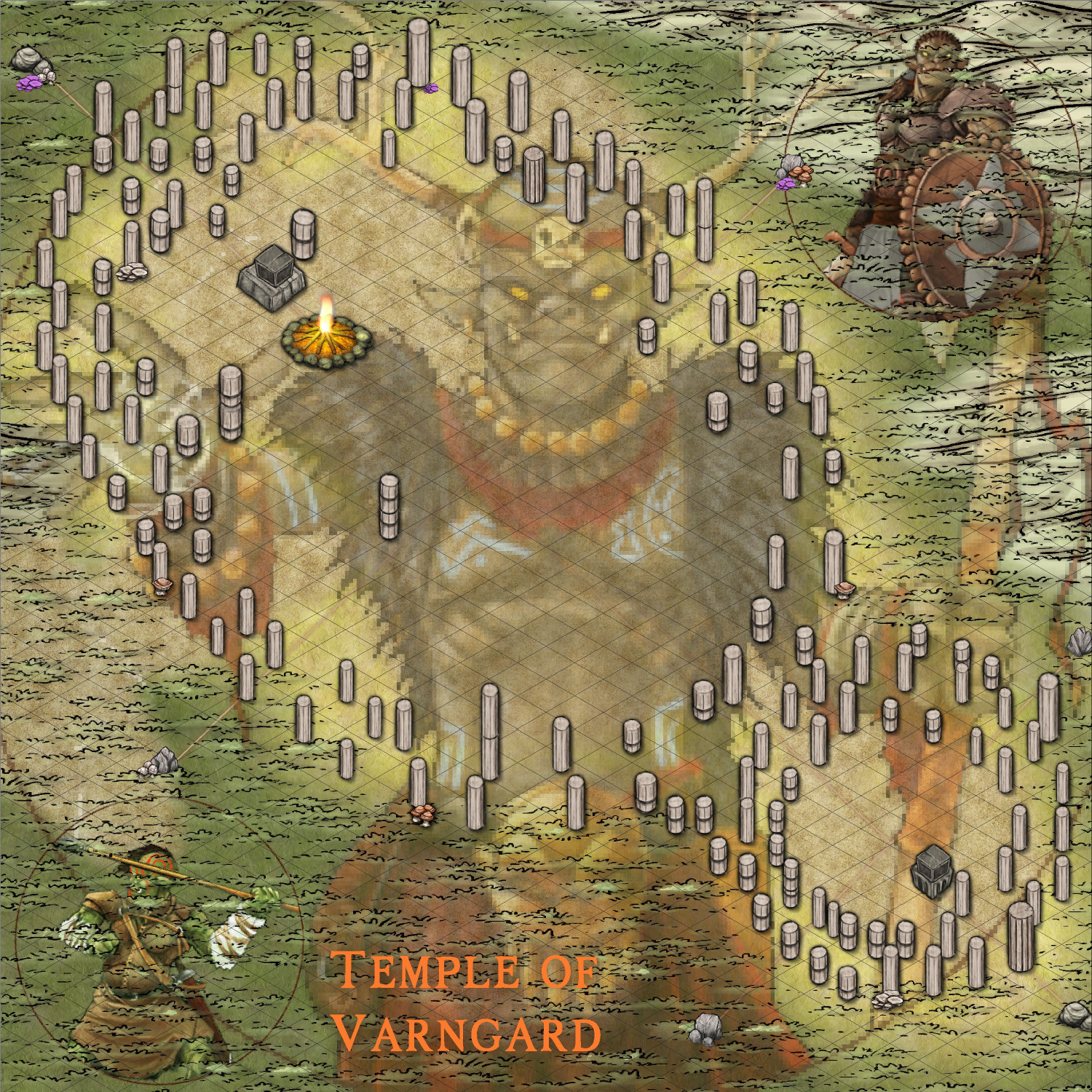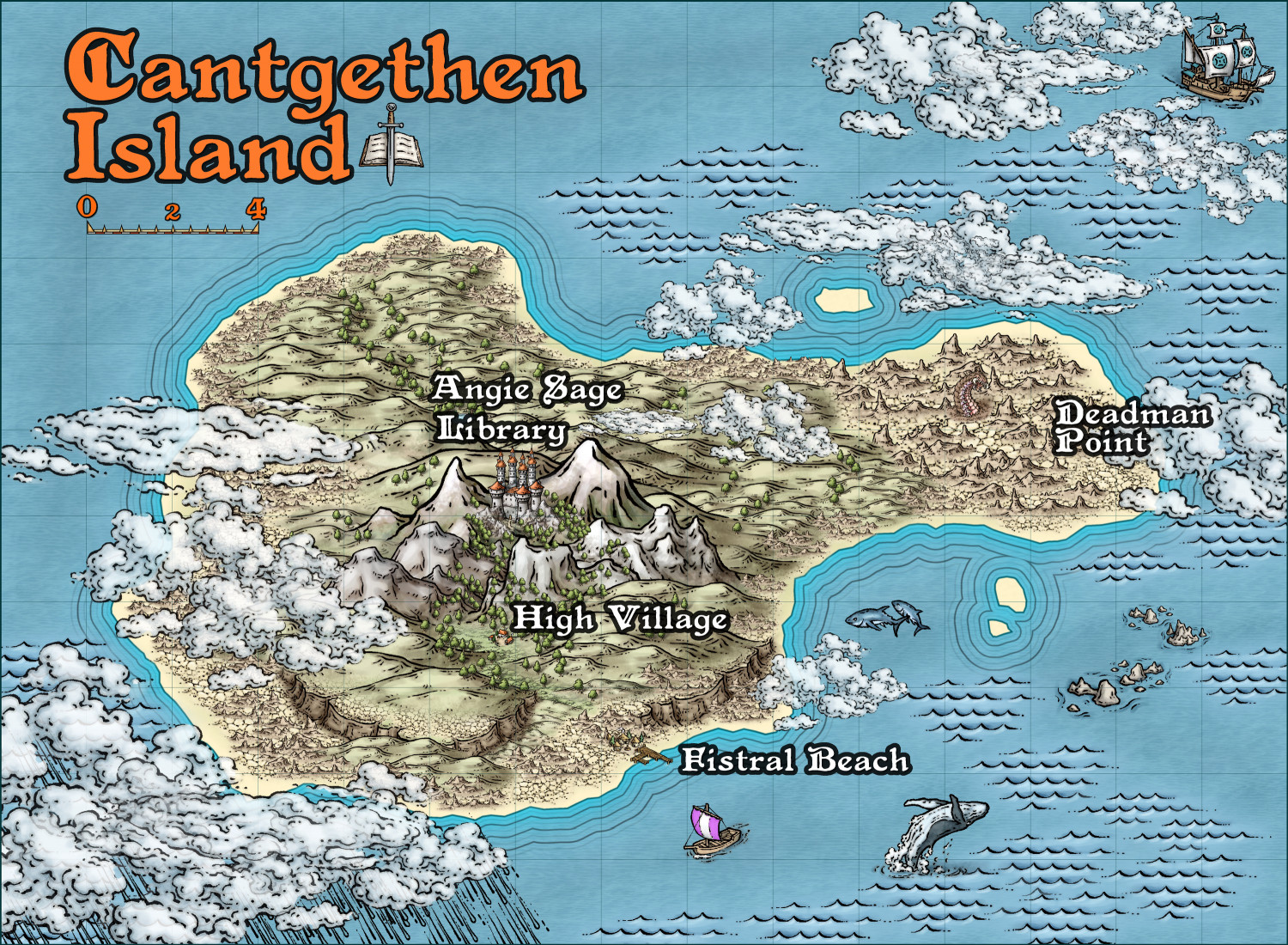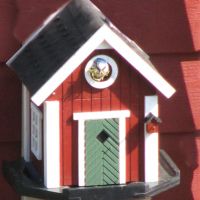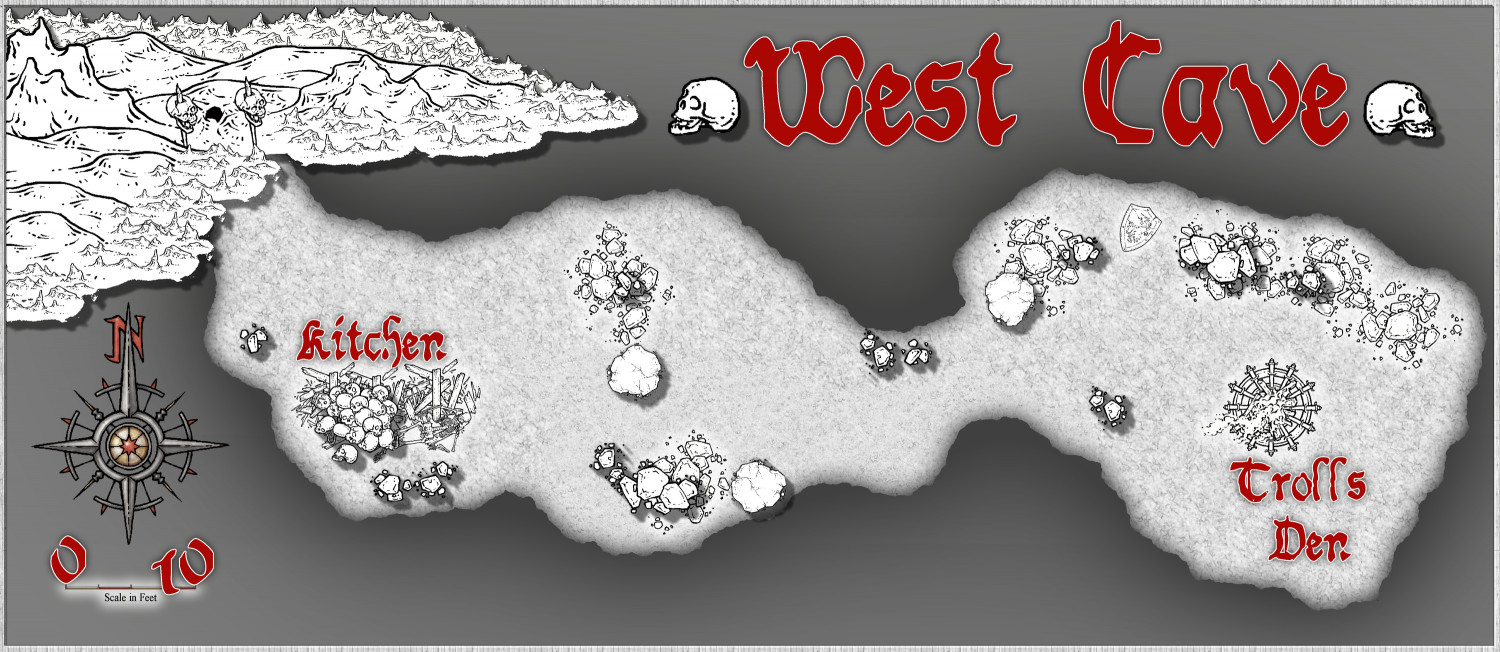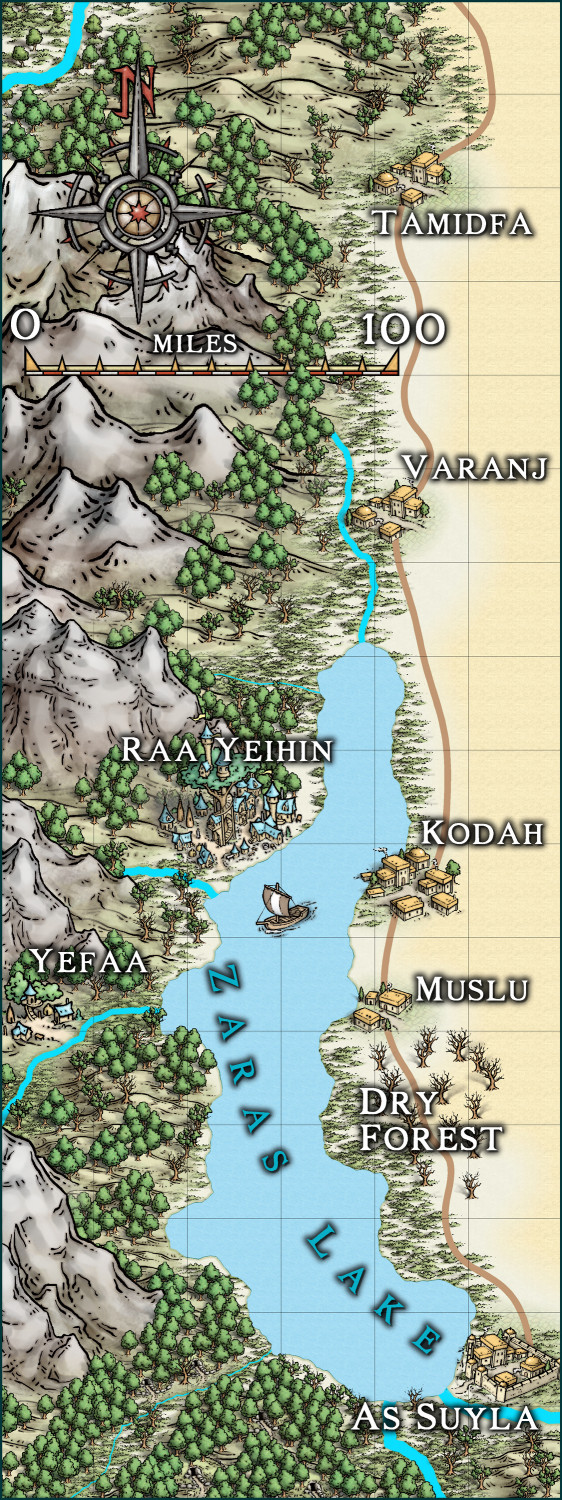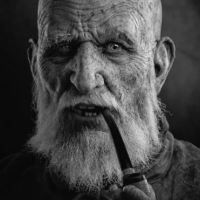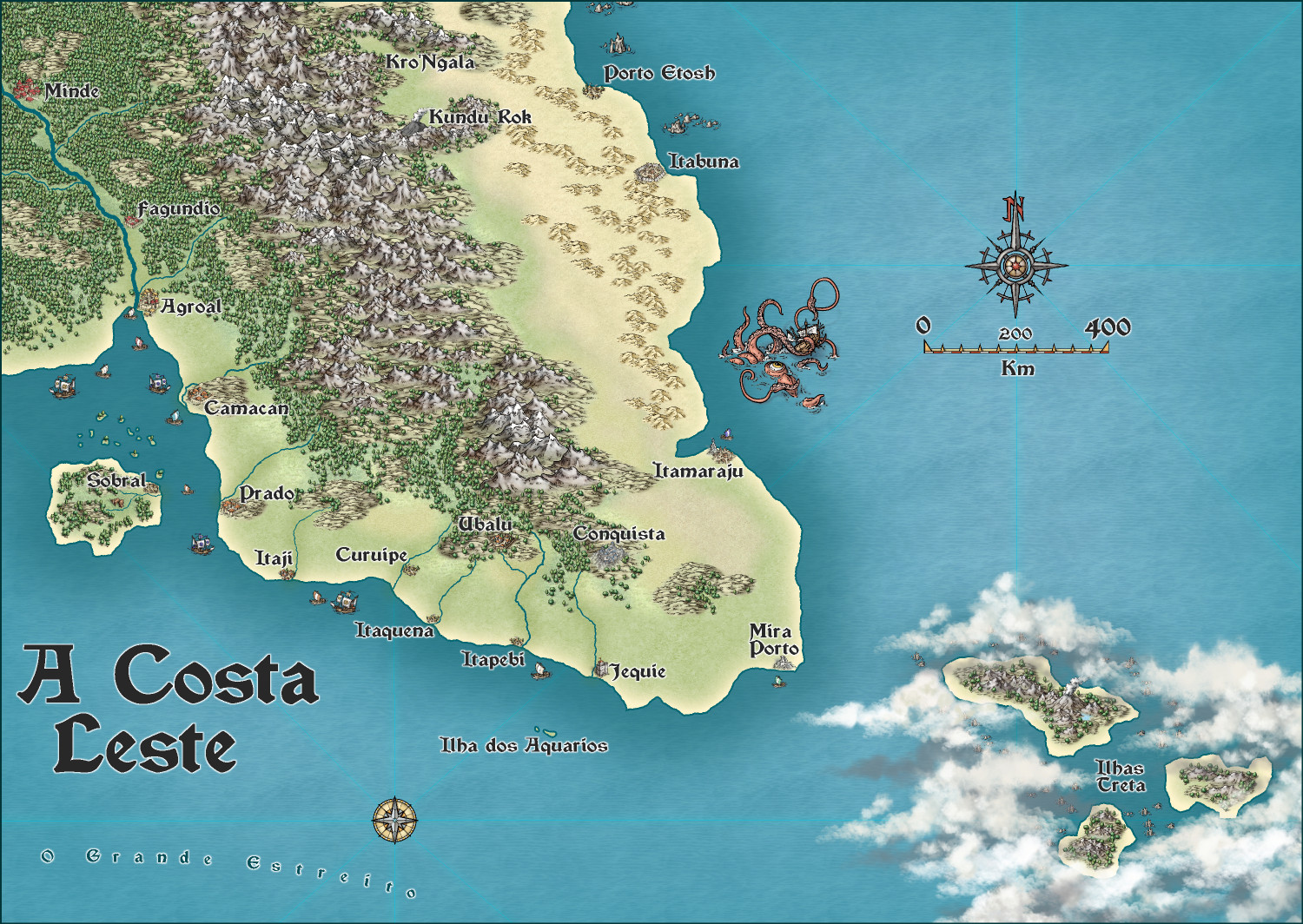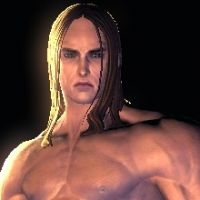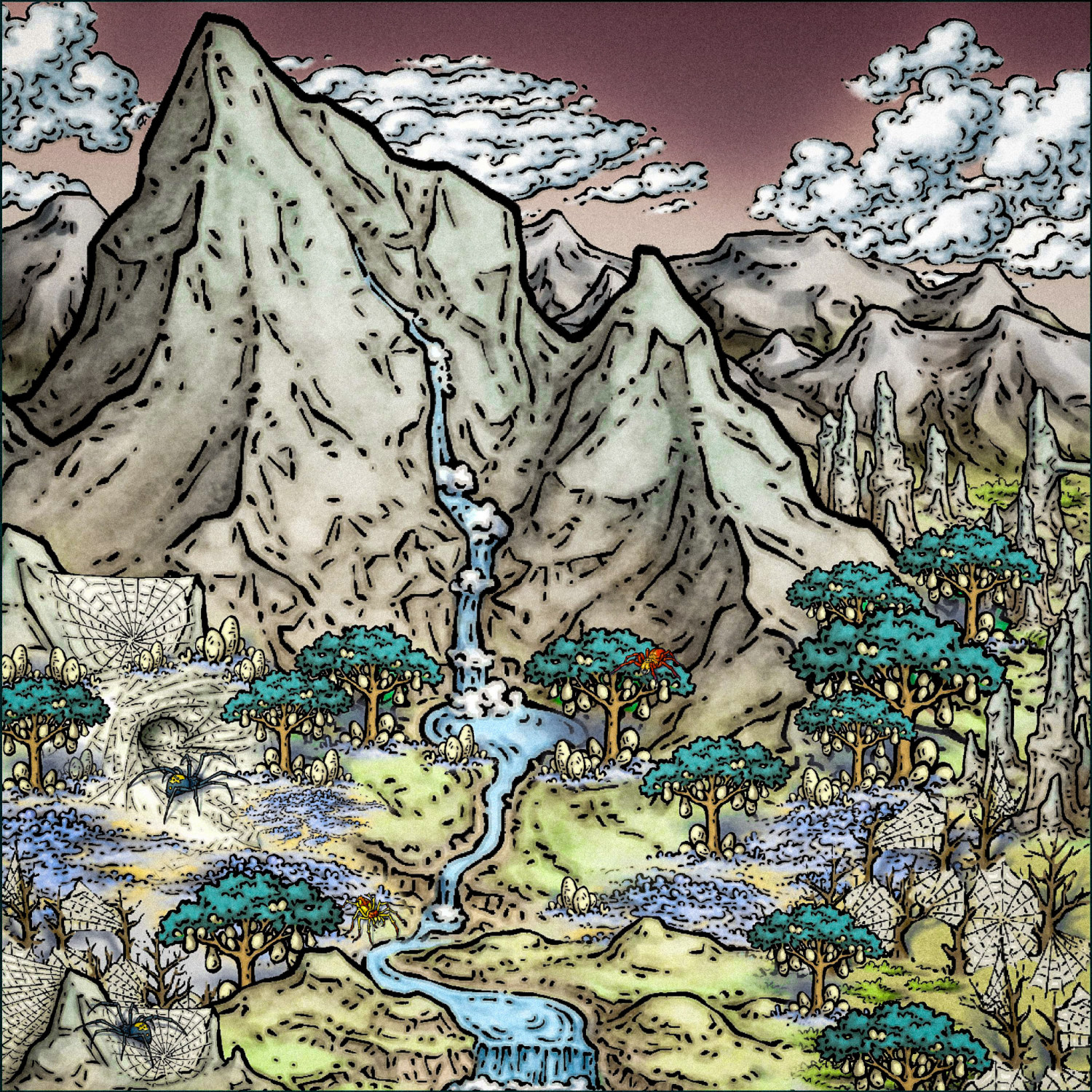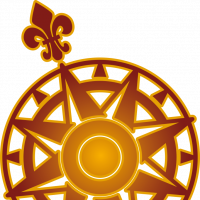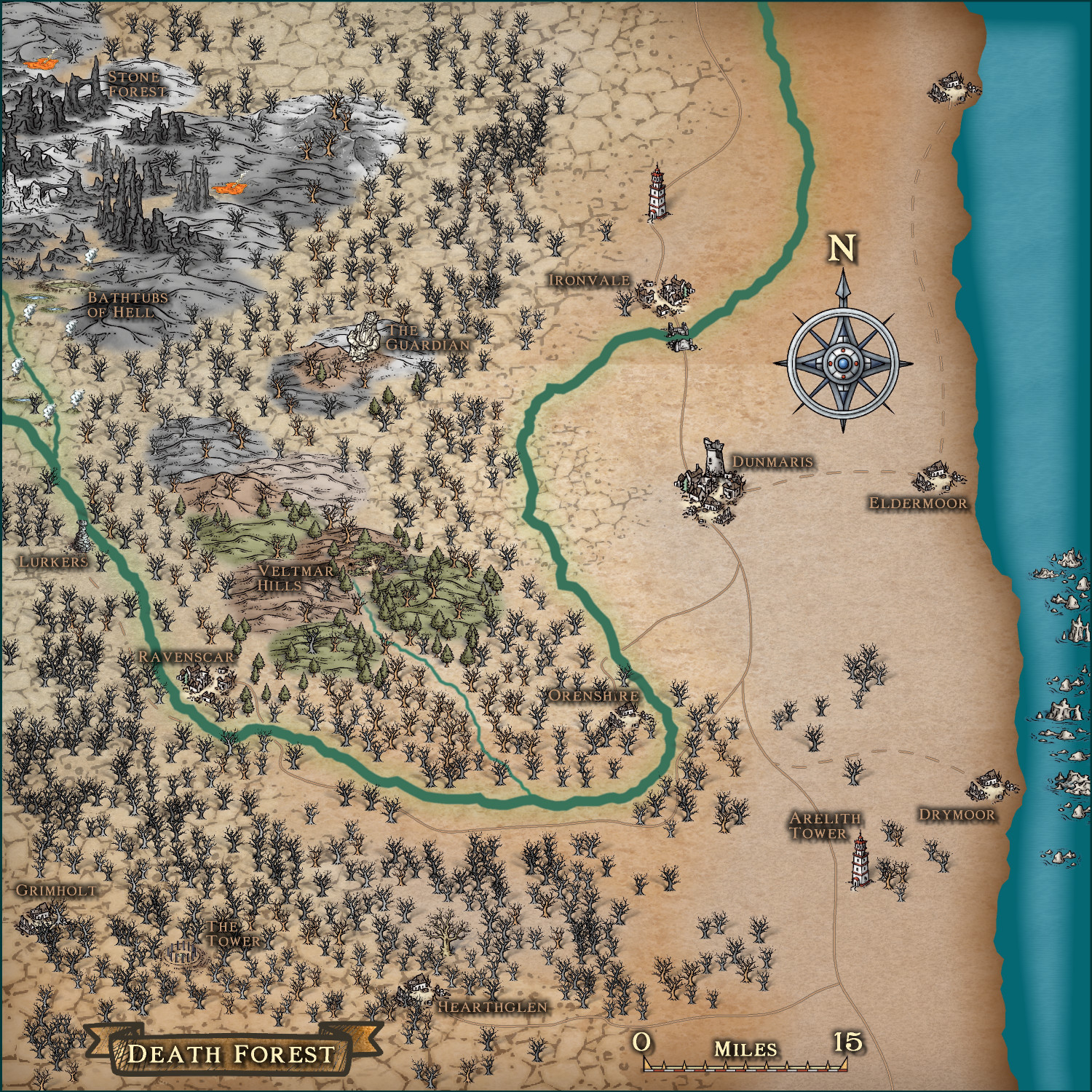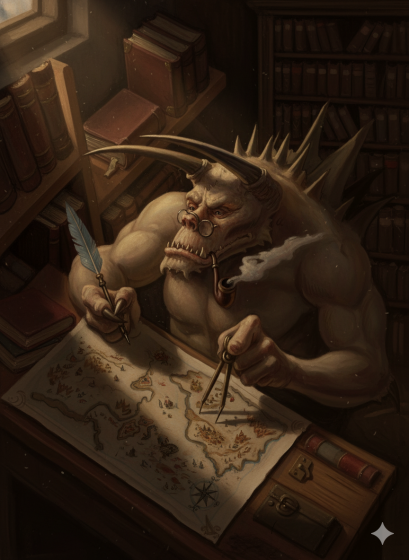
Ricko
Ricko
About
- Username
- Ricko
- Joined
- Visits
- 6,691
- Last Active
- Roles
- Member
- Points
- 10,516
- Birthday
- February 7, 1977
- Location
- merlo san luis argentina
- Rank
- Mapmaker
- Badges
- 22
Reactions
-
[WIP] Community Atlas: Kumarikandam - SE Tiantang Region
The Story of Hayun Village – The Village on the Bone Mountain
On the rugged shores of the eastern sea, where the winds salt the air and the waves beat relentlessly, stands Hayun Village, a peculiar and solitary village built on a living foundation: a hill composed of shells, bones of sea animals and the remains of daily life. This pile of materials is not only the foundation of the village; it is the story of generations of survival and adaptation.
The Origin of Hayun
It is said that Hayun’s ancestors arrived on these shores centuries ago, guided by a dream of safe land and protection from the beasts of the sea and the marauders of the neighboring lands. Finding solid ground, they began to deposit the remains of their catch – shells of molluscs, fish bones and shells of crustaceans – mixed with bones from hunting and ashes from fires. Over time, these materials, compacted with mortar made of sand and limestone, formed an artificial elevation.
The Building Process
The construction of this structure was not just a byproduct of daily life, but a ritual. Each family, at the end of the day, would take their leftovers to the top of the mound and carefully spread the materials. Larger bones were broken into smaller fragments to fill the gaps, and shells were used to reinforce the edges. Each season, a layer of mortar was applied to protect the structure from wind and rain.
The inhabitants began to build their homes on this raised ground, using timber and sloping roofs to withstand storms. Thus, generation after generation, Hayun grew upward, creating a “mountain” made of past and present life.
Defense and Isolation
Over the years, the elevation gave the village a strategic advantage. Access to the top was restricted to two ladders, easily removable in case of danger. Stories tell of pirates who tried to invade the village, only to find an impassable path and be driven back with spears and nets filled with sharp stones.
Life in Hayun
Today, Hayun is home to just over 160 people, all deeply connected to the structure that sustains them. Small shrines dedicated to sea deities dot the village, many of them made from ancient fragments found on the mountain, such as dolphin skulls and giant seashells.
The inhabitants are proud of their heritage and believe that this sacred elevation that is slowly growing is more than stone and bone; it is a spiritual guardian. On stormy nights, the elders say that they can hear the murmurs of their ancestors mixed with the howling of the wind, protecting them from unseen dangers.
The Rituals of the Living Mountain
Every year, a festival is held to honor the mountain made of shells and bones. During the event, each family offers their best shells and bones to the mountain, in gratitude and in renewal of the protection it offers. A bonfire is lit at the highest point, and chants echo, asking for the seas to be generous and the storms to be merciful.
An Ever-Growing Mountain
Hayun never stops growing. For the villagers, it is both a testament to their past and a reminder of their unbreakable connection to the sea. Each layer added is a new page in the village’s generations-old story, a story that will continue to be written as long as the winds blow and the sea brings sustenance.
Hayun Village Highlights
The Netmaker – Lao Ning: Lao Ning, with calloused fingers and keen eyes, creates the nets that are the basis of the village’s survival. Sitting in his wooden hut, he weaves plant fibers by hand, reinforcing each knot with almost ritualistic precision. His nets are renowned for their durability, and fishermen say that without them, no sea can bear fruit.
The Healer – Mei Yu: Mei Yu, a serene and respected figure, lives in a hut decorated with dried sea plants and jars of ointments. Using local herbs, crushed shells, and fish oil, she heals wounds and treats the village’s illnesses. His knowledge has been passed down through generations, and many believe his hands carry the blessing of sea deities.
The Storyteller – Uncle Shen: Uncle Shen is the heart of the village on stormy nights. Sitting by the communal fire, he tells tales of sea monsters and ancient seafarers, blending fact with mythology. His stories not only entertain, but also teach lessons about courage and respect for the sea.
The Carpenter – Jian Rong: Jian Rong, the village builder, transforms driftwood and driftwood into houses and boats. His skill is vital to the community, and each piece he creates bears his signature: a small wave-shaped carving, symbolizing harmony with the sea.
-
MY MUNDI IS READY!
-
MY MUNDI IS READY!
-
Community Atlas - Ezrute - Brukon Region
In case anyone missed it (although it’s not really important), I changed the icon on the initial Overland map to the Varngard Temple. As I was writing the history of this little place, my vision changed, and I realized that the original icon had a representational problem.
The image initially represented an orc temple, taken from Mike Schley’s Overland structures. However, I chose to replace it with a representation more in keeping with the new idea that was forming in my mind: the “Stonehengian” stone from Par Lindstrom’s Local Areas.
The temple, which was originally going to be built of wood, was reimagined as something more rustic and timeless. Monolithic structures, made of ancient and eternal stones, began to take shape in my vision. I sought inspiration to create something that strayed from the traditional and remembered a book I read as a teenager about the oldest constructions of humanity, especially from the Neolithic and Paleolithic periods. This memory took me to the Cromlech of Almendres, in Portugal. And the image of the photograph with its large stones arranged in a semicircular pattern, partially covered by vegetation, came to my mind.
I researched more about the place on the internet, analyzing plans and images to reproduce a similar environment in the Temple of Varngard: an ancient and esoteric place.
Not finding a suitable stone image for my intention, I decided to go with the columns.
Once the first part is finished, it's time to decorate the rest and fill in the spaces.
The Temple of Varngard
Situated at the junction of the Jorvund and Heskal rivers, the Temple of Varngard is an ancient monument that bears the weight of orcish history and spirituality. Built in time immemorial, this circle of massive stones, some over twenty feet tall, is arranged in a pattern that seems to align with the solstices, the stars, and the flow of the surrounding rivers. Each stone is engraved with unique runes, symbols representing the gods, spirits, and natural forces of the pantheon, and many are marked with scars from ancient rituals, such as axe carvings and dark stains that tradition holds are from sacrifices made in honor of the gods.
These stones, arranged in concentric circles, surround a central altar carved directly from the site's stone. In the center of the altar is a cleft where the orcs place offerings, ranging from weapons and food to objects of great spiritual value, symbolizing their devotion. This sacred site was the beating heart of orc spirituality, a place where spiritual leaders would gather to pray, discuss the fate of the tribe, and connect with their ancestors.
1. Decline and Humiliation
During the wars between the orcs and the Northmen, losing access to the Temple of Varngard was one of the greatest humiliations for the sons of Varngard and Velgrath. The men of Brukostad, after their victory, fenced off the territory around the temple and forbade the orcs from approaching. For the orcs, this was more than a loss of territory: it was a severing of their spiritual connection to the gods. For decades, the temple lay abandoned, overgrown with weeds and roots that the orcs believed were signs of Velgrath mourning the absence of his followers.
After the orcs settled in lands farther east, they began trading with Brukostad to regain access to the temple. This spiritual necessity eventually turned into a profitable opportunity for human traders.
2. The Trade of Faith
Today, the Temple of Varngard is the center of a religious festival that occurs each spring, when orcs make pilgrimages to the site to honor their gods. However, the pure spirituality of the event is marred by the commercial atmosphere that human merchants have created around the temple.
The fields surrounding Varngard are transformed into a chaotic marketplace, with wooden stalls and colorful tents dotted around the grounds. Vendors shout in many languages, offering wares ranging from bread, roast meats, and craft beer to religious amulets and miniature temple figurines. Human and half-orc artisans sell decorative axes and jewelry carved with symbols of the gods. A few more daring merchants offer “holy relics,” pieces of stone or wood that they claim are from the original temple, though the orcs know that most of these are frauds. There are also areas dedicated to games and entertainment, where human bards and storytellers draw audiences with exaggerated narratives of various events. For many orcs, seeing their ancestors' culture turned into entertainment is an insult, but the opportunity to set foot in Varngard and pay homage to the gods is something many cannot refuse.
3. Tension and Resentment
Despite the festive atmosphere, the resentment between orcs and humans is palpable. For the orcs, paying for something that rightfully belongs to them is an affront. “Varngard would never accept such humiliation,” some say.
The humans, on the other hand, are divided. Many merchants in Brukostad see the festival as an economic boon. Each pilgrimage season, tons of goods are sold, and the city prospers. But some of the more traditional population considers it a mistake to allow orcs to return to the temple, fearing that it will reignite old rivalries.
4. A Tense Ritual
When the orcs finally reach the sacred stones, the noise of the market gives way to a reverent silence. Within the circle, there is no sound of fairs or arguments. Only the sound of the rivers and the whisper of the wind passing between the stones. Here, even amid all the commerce and tension, orcish spirituality resurfaces.
Offerings are laid on the altar, and chants echo across the fields. It is at this moment that the orcs feel a connection to the gods, even though they know that this connection comes at the bitter price of relying on their former enemies to access it.
5. Orc Mythology
Ancient orc mythology is a rich collection of beliefs and legends, passed down through the generations by storytellers and recorded in the few surviving chronicles and stones. This pantheon of gods and spirits reflects the orcs' relationship with natural forces, everyday life, and the depths of the spirit world. Although fragmented, it offers a glimpse into the culture and traditions of Brukon's earliest inhabitants.
Here are the main gods and spirits worshipped:
5.1 Varngard, the Lord of Thunder
• Domain: Thunder, lightning, war, justice, and power.
• Description: Varngard is the supreme god, associated with the sky and order. He is the patron of warriors, rulers, and leaders who maintain harmony in society. His sacred weapon is the axe. His symbol is the black pine, a tree venerated as sacred. Thunder is said to be his voice, calling for justice and order in the world.
5.2 Velgrath, the Mistress of the Underworld
• Domain: Earth, water, cattle, wealth, magic, and the underworld.
• Description: Velgrath is the goddess of chaos, fertility, and wealth. As guardian of the underworld, she represents the inevitable cycle of life, death, and rebirth. Often depicted as a towering figure with horns and glowing eyes, she is both feared and revered. Velgrath is the antagonist of Varngard, symbolizing the duality between heaven and earth, order and chaos. Rituals to Velgrath involve offerings of cattle and valuable objects to appease her wrath.
5.3 Svaruk, the World Forger
• Domain: Fire, forging, heaven, and creation.
• Description: Svaruk is the god of fire and creation. He is depicted as a muscular giant, always carrying a glowing hammer used to shape the world and divine weapons. Svaruk's forges are said to be hidden in the mountains.
5.4 Mokra, the Protector of the Earth
• Domain: Earth, fertility, crops, women, and weaving.
• Description: Mokra is the most revered goddess among the orcs, as she rules over the fertile land that sustains life. She is the protector of women and weaving, and the patroness of goldsmiths, activities central to orc culture. Depicted as a strong, motherly figure, Mokra is also seen as the weaver of fate, deciding the future of the living and the dead.
5.5 Jarlok, the Guardian of Spring
• Domain: Spring, fertility, vegetation, and youth.
• Description: Jarlok is the god of renewal and growth. He is depicted as a young orc with a crown of flowers and leaves, symbolizing the cycle of the seasons. Rituals dedicated to him occur during the spring, celebrating the fertility of the land and its people. He is said to walk the fields, blessing the harvests.
5.6 Zoryka, the Sisters of the Dawn
• Domain: Dawn, twilight, and protection.
• Description: Zoryka is depicted as two twin sisters, Noryka and Loryka, who control the daily cycle of the sun. They are protectors against evil forces that try to invade the world at night. Warriors pray to them before hunts and battles at dawn.
5.7 Spirits and Minor Entities
In addition to the major gods, orc mythology recognizes several spirits and supernatural beings that inhabit the world:
Dom’kraal: Guardian spirit of homes and hearths, worshipped to ensure prosperity and protection.
Lashrug: Guardian of the forests, described as a creature that takes the form of trees and animals to protect its domain.
Rusalkri: Female aquatic spirits that lure the unwary into the depths of lakes and rivers.
Vodyark: Spirit of the waters, represented as an old man with a beard of seaweed, who rules over wells and swamps.
6. Cultural Complexity
The orcish pantheon reflects the duality of order and chaos, life and death, heaven and earth. The gods are deeply connected to orcish culture, shaping its customs and traditions. For example, warriors sacrifice to Varngard before battle, while farmers call upon Mokra for blessings to ensure good harvests.
The rivalry between Varngard and Velgrath symbolizes the balance that orcs believe is necessary for the world to function: without chaos, order stagnates; without order, chaos consumes all.
-
Community Atlas: GODTAGEL Region
Supported by Damelza, capital of Culture is the old and forbidden Angie Sage Library, name in honor of the founder, Angie the Sage.
-
Community Atlas - Haddmark - Peredur
-
Community Atlas - Berenur - Urtrah Desert
-
MY MUNDI IS READY!
-
Spider Attack!
-
Community Atlas - Fonlorn Archipelago - Bleakness - Death Forest.
This time I worked on the Lore before I started drawing the map. It took me a few days... I hope you enjoy.
Death Forest – Where Not Even Death Treads
1. Introduction
East of the towering Churning Mountains, there once stood an ancient forest, where its canopy once provided shade, shelter, and food for travelers and animals alike, and the Slimy River, once a pure, crystal-clear stream, meandered through hills and valleys, bringing sustenance to villages and creatures alike. But all that died the day the sky turned gray, the ground rotted, and the once-vibrant forest fell silent.
Now the trunks stand like blackened corpses, their twisted branches reaching skyward like frozen arms in a final spasm of agony. No birds sing. Only the hollow sound of silence itself, deep and crushing. It is said that if one stops and listens, one can hear faint whispers in the gusts of wind—not natural breezes, but echoes of something that was once alive.
2. Geography of Death Forest – A Corpse That Insists on Breathing
The dry, cracked and irregular terrain extends into dry hills and desolate valleys, where the native vegetation has been taken over by a thick layer of ash and hardened lava. Charred trees stand like skeletons, their roots exposed and broken by the violence of the underground fire. Twisted and dried-out bushes rest on the barren soil, unable to resist the weight of destruction.
The rivers and streams, once winding and clear, are now snakes of mud and poison, dragging debris and fragments of a forest that no longer exists. Their darkened waters reflect the cloudy and suffocating sky, where the smoke from occasional eruptions sometimes obscures any trace of light. From the Churning Mountains and their snow-capped peaks, now come the winds that carry with them the volcanic dust that ravages every space. The sky is covered by heavy clouds and ash storms cloud the landscape. In every corner, nature seems to be in a slow confrontation between decay and resurrection, a silent battle where the earth itself hesitates about its fate.
3. Daily life in the region:
In this isolated region, the sparse survivors continue their daily struggle for survival. Agriculture, which once sustained families, has been reduced to small fields where the soil, affected by volcanic ash, can barely produce anything other than stunted fruits. The fishermen, who depended on the abundant waters of the Slimy River, now face rough seas, whose nets often return empty or loaded with deformed creatures, a reflection of the changes that have affected the region. Even in the face of adversity, stubbornness and resilience remain, and life goes on, slowly, one day at a time.
At dawn, the men and women begin their tasks, aware of the hardship of the journey, but with a sense of quiet determination. Farmers, with their hoes and calloused hands, try to cultivate what they can on patches of infertile land, searching for roots and hardy herbs for food. Fishermen, staring at the horizon, wait for the tides that could perhaps bring some hope. There are few words exchanged between them; the collective suffering makes them more focused on their daily activities. Traditionally, the simplicity of the tasks transforms into a ritual of connection with the land and with what remains of life around them.
At night, people gather in small wooden huts, where the heat of the wood fire provides some comfort. There are no heroes or great stories in this region, but rather the experiences of ordinary men and women, who resist each dawn. Before going to sleep, there is a custom that persists: each person writes, with charcoal, a wish or prayer on the wall of the hut.
They believe that the land, in some way, hears their words, and that the ancestors who inhabited these lands still watch over their descendants. In the midst of destruction, the community finds strength in memories and in the need to move forward.
4. Places of interest
For fearless souls seeking to explore the limits of the unknown, there are places where mystery and danger intersect, challenging the human spirit. Risk is a constant, but so is the fascination of discovery. For those brave enough, these points of interest are more than destinations:
4.1 The Stone Forest
In the northwest, near the Churning Mountains, the forest takes on a different form: a graveyard of petrified trees. The trunks that were burned there by the infernal heat of the eruption did not crumble into ashes, but were sealed in time, like twisted stone pillars. Gray, immobile and hardened, they look like prisoners condemned to an eternity of vigil.
Absolute silence reigns in this place. There is no wind, there is no life, there is not even the sound of one's own footsteps. Travelers speak of a suffocating emptiness, as if something were stalking them, hidden in the stillness. Some swear that, at nightfall, they hear originless murmurs, ancient whispers that slide between the stone trunks like invisible serpents.
4.2 The Hell's Baths
Hidden among volcanic debris and poisoned mudflats lie the Hot Springs, nicknamed the Hell's Baths by the few survivors of the region. There is no welcoming steam here, only an unbearable stench of sulfur and rotting flesh. The pools bubble with a yellowish-black viscosity, and anything that touches their waters dissolves into fetid goo.
Rocks covered in reddish moss and the carcasses of deformed animals surround this boiling swamp. Some say that the place is inhabited by something that crawls among the rocks and mud of the region, waiting. No man who has entered the pools has ever emerged whole.
4.3 The Slimy River – The Great Vein Exposed
Once clear and vibrant, it now cuts through the forest like an infected wound. Its banks are a poisonous bog, where rare mosses crawl like necrotic skin over dead flesh, covered in swarms of fat, shiny flies.
The river itself runs thick as old oil and gives off a sickening odor—a smell of sulfur, iron, and something sweet and putrid, like a decaying corpse. No fish swim in its waters. No roots dare touch them. The few who have tried to drink from the river have died in agony, their bodies contorted, their eyes leaking black fluid before their skins melt like wax under fire.
4.4 The Veltmar Hills – The Flash of Life
In the heart of the destruction, one place still stands: the Veltmar Hills. Here, the forest refuses to die.
There is a legend of the Healing Tree, which lives and endures near the source of the small river, a tributary of the Slimy. Its leaves are a ghostly golden green, and are said to have magical properties, capable of curing any illness. But its presence defies logic, and those who have tried to take it say that something protects it. Some speak of roots that move like serpents. Others have voices that warn intruders in forgotten languages.
Between the hills and the great tree, hidden in a gorge, lies the Cave of Onnith, a dark tunnel whose entrance opens like a hungry mouth. It is said that it is here that lies the last remnant of something that the eruption should have destroyed but that survived—or worse, something that was born from the ashes.
4.5 The Forgotten Villages of the Coast
To the east, towards the sea, small villages endure like ghosts of what they once were. Once prosperous, the villages that once cultivated the fertile fields now struggle to survive. The land has been poisoned by volcanic ash, and nothing grows in the dry, toxic soils.
The villagers live off the sea, but even the waters seem to have been affected. The fish they catch have strange flesh, a rusty taste, and something acidic that irritates the tongue. The elders whisper that the dead forest corrupts even the tides, and that one day the ocean will turn against them. Though humble and with scarce supplies, these small settlements are indispensable for resupplying those who venture into the wilderness.
5. The Dangers of Death Forest
Enter Death Forest at your own risk! Maddening mists, poisoned soil, and lightning strikes await you in this dead land! Nameless creatures lurk in the fossilized shadows, and ancient whispers seek to invade your mind. Here, even death itself fears to linger.
5.1 The Lurkers – The Hungry Shadows of the Slimy River
On the filthy, rotting banks of the Slimy River, the Lurkers appear, grotesque specters, the very children of corruption and oblivion. Their tall, skeletal figures, shrouded in shadow, ooze from the darkness as if they were part of it. Those few who dare to cross this land in search of more than survival speak of them with the dread of those who have encountered something that cannot be described. Are they beasts degenerated by the disgrace of the land, specters chained between worlds, or beings whose purpose surpasses mortal comprehension?
In the damp mud holes along the riverbed, the Lurkers hide. They do not walk, they crawl, they slither through the darkness of the night. Their bodies are stretched skeletons, like rotting flesh, with sagging gray skin stretched tight over broken bones. The black veins in their limbs seem to throb as if something alive, something grotesque, were moving beneath, a force that reaches down from the abyss and permeates everything it touches. Their eyes, if they have such eyes, do not reflect light—they are opaque holes that swallow hope. Most terrifying, however, is the silence. There is no sound—not even the rustle of a leaf in the wind or the snap of a broken twig. Only an immense void, an absolute emptiness that precedes the attack.
The elders say that the Lurkers were born of the eruption. Others say they are a fusion of men and beasts, corrupted by the madness of drinking the poisonous waters of the Slimy, deformed by the destruction. And there are those who point to the obelisk upstream – an ancient structure, its main lair. Few have dared to approach it, but those who have returned speak of a presence there, a palpable force that insinuates itself into the minds, calling the Lurkers, like a beacon of their own decay, to the darkness of its lair.
If there is a reason for the Lurkers’ hunts, no one knows. But the missing, those who are swallowed up in the night without a single scream, become just another nameless echo in the endless darkness of the forest, a shadow forgotten in the abyss, lost forever in the teeth of the shadows.
5.2 Bone Worms
Emerging from the cracks of the parched soil, the Bone Worms are hideous creatures that crawl like serpents. Their scales are white as marble and they have disproportionate jaws with long, blade-like teeth. These predators devour everything that crosses their path, without mercy. Their bodies have a rigid outer shell and a gelatinous interior; they are agile enough to move at great speed underground, leaving only a trail of destruction.
They feed on everything that still lives, be it humans, animals or even other creatures from the abyss. Nothing escapes their voracity, and nothing remains after their passage. Where these worms walk, life is a distant memory, swallowed by the earth and silence.
5.3 Ash Golem
After the eruptions that devastated the earth, a wizard named Arelith, in desperation, tried to create an immortal defense force. Using forbidden magic, he fused human beings and volcanic minerals with the power of magma, creating the Ash Golems.
Their massive, twisted forms are composed of fragmented rock and ash, with veins of visible lava flowing from their joints. Their bodies are disproportionate, with large, clumsy limbs and imposing heads, but with empty eyes, like slits of darkness. Their feet and hands are like great obsidian boulders, capable of crushing everything beneath their weight. Arelith believed them to be her immortal servants, but the corruption of magic took hold of the golems, turning them into insatiable creatures. They rebelled against their creator and crushed him like a dry twig. Now, they roam consuming what remains of the devastated land, guided only by eternal destruction.
5.4 Eurynomes
These vengeful spirits are said to have been awakened by the eruptions and are known as Eurynomes. Their bodies are now made of fire and ash, with burning skin and flames flowing through their entire bodies. Their eyes glow with immortal fury, and their flaming claws tear the air. They are the very wrath of the earth, manifested by primal fire.
Wandering the devastated ruins, they hunt those who transgress natural or divine laws, punishing them with eternal fire. Their every step sets the earth ablaze, and anyone who comes near feels the unbearable heat. Their presence is a harbinger of doom.
5.5 Specters of Wrath
During the eruptions that devastated this area, hundreds of people were tragically consumed by flames and lava. Those who died in anger could find no rest buttheir souls trapped between the world of the living and the afterlife. They emerged as Wrath Wraiths, beings whose screams echo through the charred ruins, fueled by the rage and suffering of their violent deaths.
With bodies translucent but still shaped like humans, they float through the ashes, their eyes burning with a savage glow of pain and resentment. Their wails echo through the dark nights, a harbinger of imminent death for those who dare trespass on their cursed lands. When their prey is found, their screams of pain and vengeance are so intense that they can tear through body and soul, dragging the living to an unbearable fate.
5.6 The Guardian
They say that, deep in the dry forest, a sleeping giant awaits awakening. Somewhere in the distance stands a great statue, but its outlines are not carved stone—they are petrified flesh. Ancient storytellers tell of a giant warrior who, in ancient times, challenged a primeval entity that inhabited the forest. This creature, made of the very essence of the earth, did not kill the giant, but turned him to stone, imprisoning him in an eternal form, as a reminder of his fury.
Some say that, on moonless nights, one can hear the faint sound of stones moving, as if the giant were trying to free himself. The elders claim that the giant is not only a guardian of the forest, but its very soul. And when he awakens, the earth will rise again, and the forest will once again be unbeatable, burying those who dare disturb it.
5. Npcs
5.1 Oswin, the Last Dwarf
Oswin is the last surviving dwarf of Toren, a dwarven settlement near the mountains that was swallowed by death. He works to create contraptions that can survive in the toxic environment of the forest and has a deep desire to rebuild what is left of his community.
5.2 Draza, the Desperate Healer
Draza was the chief healer of a village on the edge of the forest. After the eruption, she lost everything, including her divine gift, but she continues to seek remedies for the forest's curses, drawn by the hope of a tree that can heal.
5.3 Gar, the Merchant of Relics
The half-orc Hrothgar roams the edges of the Death Forest, offering rare artifacts and ancient riddles. He sells items and precious information, but most of his wares are priced far higher than anyone would expect to pay.
5.4 Zyra the Seer
She was born into a simple family on the banks of the Slimy River. As a child, she suffered an accident that marked her with the corruption of the river, gaining psychic and spiritual abilities. Growing up in contact with the spirits of the drowned, she seeks to understand the source of this corruption and restore the lost spiritual balance. Her mission is also to free the spirits trapped in the waters and discover what really happened to them.


